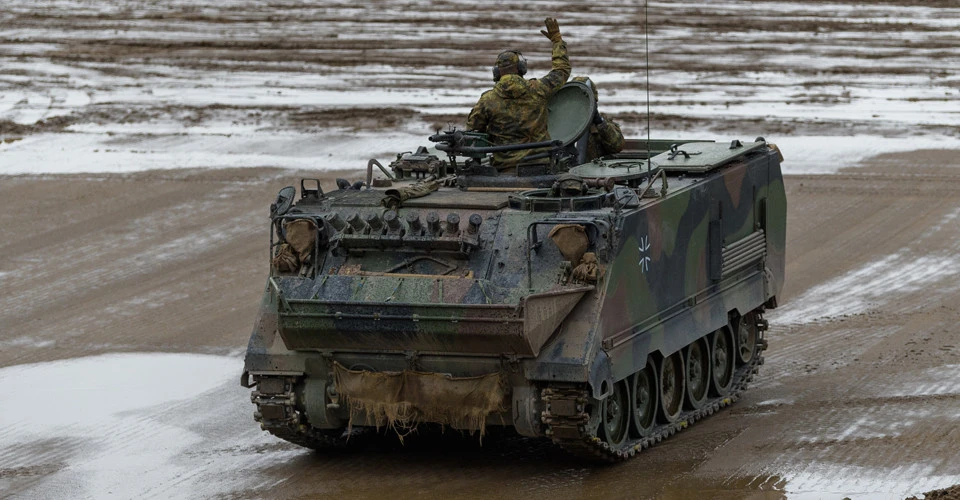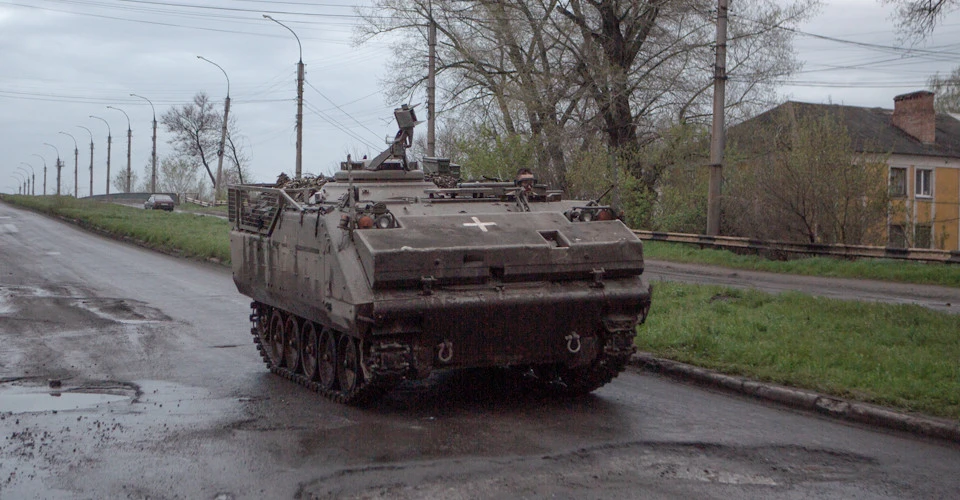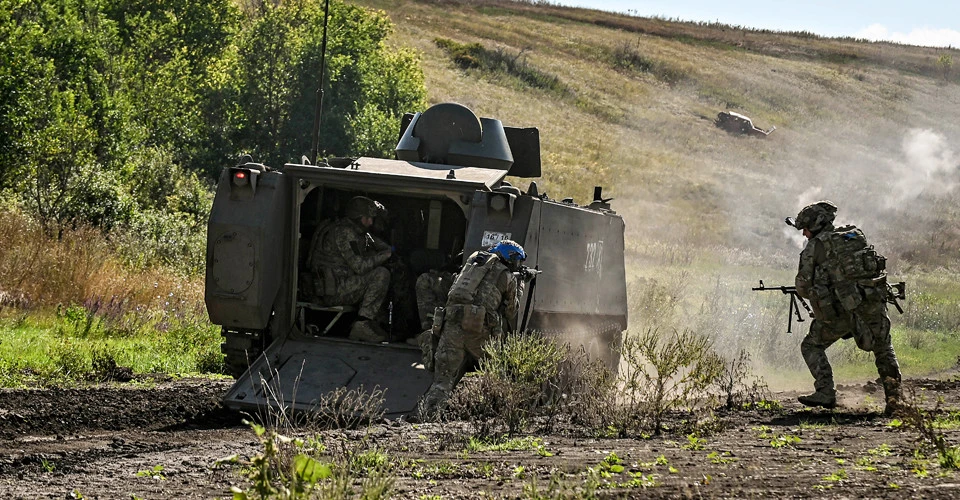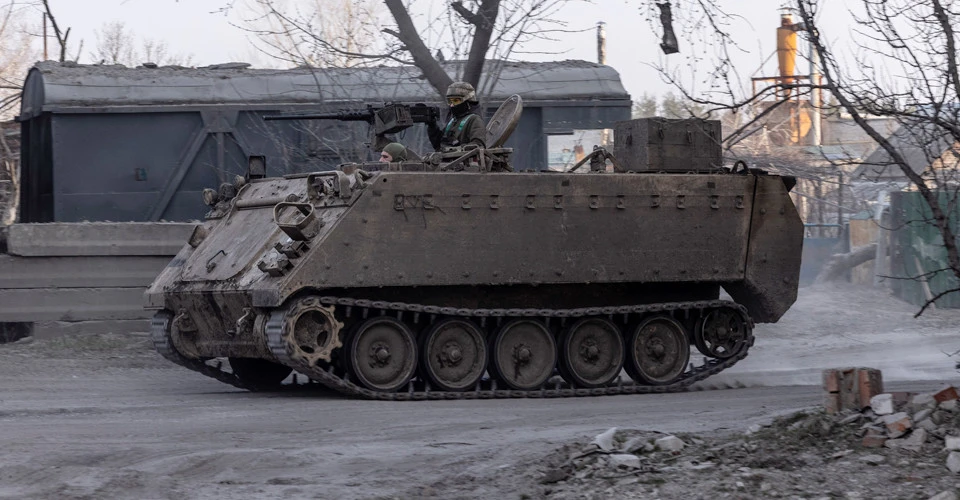
US M113 armored personnel carrier: technical characteristics, advantages over Soviet models
Only the military leadership can say how many M113 vehicles in its variations are currently in use by the Ukrainian Armed Forces. "More than a dozen countries have supplied the Ukrainian army with M113s, and according to open sources, their number ranges from 500 to 1,100"
Espreso tells more about the famous American armored personnel carriers, what are their advantages over their Russian vehicles, and how Ukrainian defenders respond to Western armor.
What is M113 and how it was created
The M113 (M113 armored personnel carrier) is an American tracked armored personnel carrier, the main armored vehicle of the US army. It is used to transport military personnel in the area of active combat operations. This vehicle is in service with many armies around the world, including the Armed Forces of Ukraine.
The United States began working on the development of new armored personnel carriers after World War II, taking into account its experience. The new armored vehicle was supposed to have better maneuverability characteristics than the then existing models (thanks to a new engine), overcome rough terrain faster, and get better armor protection that would not affect the overall weight - the Americans wanted the APC to be able to be delivered wherever it was needed, even by air.

Photo: gettyimages
An innovation was the aluminum alloy armor (the M113 is the first production military vehicle with an aluminum hull). Tests showed that aluminum armor provided better protection than steel armor against armor-piercing bullets and fragments of high-explosive shells. Up to 40% of the armored personnel carrier's components are made of light alloys. The aluminum hull is much more rigid than the steel one. This made it possible to reduce the number of reinforcing structures and create a more comfortable interior. In its original configuration, the M113 was armed with a 12.7 mm machine gun and equipped with a gasoline engine. It was subsequently modernized several times.
Its crew consists of two people: a mechanic-driver and a commander. The M113 is capable of transporting an airborne team of up to 11 people and can also serve as the basis for several dozen specialized vehicles.
Serial production of the new armored personnel carrier began in 1960. The total number of M113s produced is about 80,000, and fifty countries have adopted them.
Design of M113 armored personnel carriers
The engine compartment of the M113 is located in the right frontal area. The transmission equipment is also located in the frontal area. The control room is located on the left side of the front, and the space for troops and combat equipment is in the aft part of the armored personnel carrier.
The M113 armor hull is a rigid box structure assembled by welding rolled aluminum armor plates with different thicknesses. The frontal part of the hull consists of two 38 mm plates, which are inclined at 45° and 30°. This provides protection against 12.7-mm armor-piercing bullets from a distance of 200 meters.
The standard tracks are steel, single-crested, with removable asphalt rubber pads, and double-crested tracks can be installed. The special design of the crawler track allows overcoming water barriers by rewinding the tracks.

Photo: gettyimages
The engine and transmission compartment is separated from the rest by a fireproof partition. There is a free passage between the landing compartment and the control room. The driver and commander of the vehicle have individual height-adjustable seats for driving with a view through the upper hatches. Ten paratroopers are seated on two folding benches on the sides of the vehicle, facing the vehicle's axis, and the eleventh paratrooper is seated on a separate removable seat in the center of the compartment. With the benches folded down and the center seat removed, the airborne compartment can be used to transport cargo with a total volume of up to 6.54 m³.
The driver and commander have individual hatches above their seats for boarding and disembarking. For boarding and disembarking, there is a large hinged door in the stern of the vehicle, through which infantrymen can quickly leave the armored personnel carrier two at a time. The door is lowered and raised by a hydraulic drive controlled from the driver's seat. There is also a conventional door, a hatch in the upper windshield for servicing and dismantling the engine and transmission. There are several smaller hatches in the hull roof. Since the M113s of early modifications were floating, all hatches are fitted with rubber seals.
The 12.7-millimeter machine gun is mounted on the commander's turret, which allows it to fire in a circular pattern. The ammunition consists of 2000 rounds. The observation equipment includes 4 periscopic devices located around the driver's hatch. There are also 5 observation devices in the commander's turret.
Tactical and technical characteristics
- The hull length is 4.86 m,
- The width of the building is 2.69 m,
- Hull height - 2.5 m,
- Weight - 12300 kg,
- Crew - 2-3 people,
- Landing party - 11 people,
- Machine gun - 12.7 mm,
- Armored protection - 12-38 mm,
- Speed on the highway - 64 km/h.,
- Operating range - 320 km,
- Engine - 215 hp.
At the same time, it should be remembered that the M113 has more than 40 variants. Not only the Americans, but also other operating countries have developed their own modifications based on the M113. Thus, in 2021, the M113 APC became the carrier of an anti-tank system from Ukroboronprom.
M113 in Ukraine
On April 13, 2022, US President Joseph Biden announced a military aid package to Ukraine worth more than USD 800 million. This included, among other things, 200 M113 tracked armored personnel carriers.

Photo: gettyimages
These armored vehicles were transferred to Ukraine from the US National Guard's stockpile. The National Guard's M113s were in mothballs, but it took up to 5 days to bring them into full working order. The US military claimed that even in the mothballed state, they cherished these vehicles as the apple of their eye.
At the end of April, the US Department of Defense showed a video of the shipment of weapons to Ukraine.
The story features a specific modernization of the M113. The A3 version is the latest version of this armored personnel carrier still in use by the US Army. Its features include a 275 hp turbocharged diesel engine, a steering wheel instead of levers for the driver's mechanic, and additional armor. In May 2022, the Ukrainian military already demonstrated training on the M113.
Another large batch of 50 M113 tracked armored personnel carriers in an ambulance version was delivered by the United States in August 2022. In total, the US Army has about 5,000 units in service, and about 8,000 more are in storage. They are gradually being replaced by AMPVs, but the production rate is quite low - about 200 vehicles per year.
"Given the available information about the US Army's plans to receive about 3,000 AMPVs, it will take about 15 years to complete this contract at a rate of about 200 vehicles per year," Defense Express writes.
In addition to the United States, Lithuania, Denmark, Australia, the Netherlands, Germany, Spain, Portugal, and other countries have provided Ukraine with M113s. All figures in official reports indicate that Ukraine received at least 500 M113s. At the same time, many countries reported the transfer of armored personnel carriers without specifying the number. Therefore, in reality, Ukraine has much more of these armored vehicles, according to some reports - more than 1,000.
What kind of M113s are fighting in Ukraine
Military observers collected information about some of the M113 modifications used by the Ukrainian Armed Forces on a piecemeal basis. For example, Australia has never reported the transfer of the M113 AS4 ALV in the Ute cargo version to Ukraine. However, in March 2023, photos of the APC, which Defense Express observers call a "rare armored cargo taxi," appeared in the public domain.

Photo: gettyimages
"According to open sources, the Australians had only 50 of these vehicles, which were converted into armored cargo taxis in the mid-2000s. The Australian Ute can take on board from 5 to 7 tons of cargo placed in a standard 10-foot container. Such containers can be used to transport provisions for soldiers, as well as fuel or ammunition to the front line. Theoretically, the AS4 ALV can tow a 105-mm L119 howitzer or fit a block of missiles up to M142 HIMARS in the cargo compartment," the observers wrote.
In the fall of 2022, Lithuania handed over M113-based self-propelled mortars (Panzermörser M113) to Ukraine. Vilnius received these vehicles from the Bundeswehr in 2005-2006. The Panzermörser M113 is equipped with a 120-mm mortar from the Finnish company Tampella. The range is 6.5 km and the rate of fire is at least 5 rounds per minute.
In July 2023, it became known that the Belgian company John Cockerill was modernizing M113 armored personnel carriers for Ukraine. The transfer of these armored vehicles to Ukraine is funded by the governments of Belgium, the Netherlands, and Luxembourg.
In August 2023, the 1st Separate Special Forces Brigade named after Ivan Bohun demonstrated an APC M113 equipped with Turkish Sarp Dual combat modules to defeat unmanned aerial vehicles. The latest air defense systems produced by Turkey are helping Ukrainian forces in the Liman sector.
"ASELSAN's combat module has two mounts for mounting weapons, which can be a 7.62mm machine gun, a 12.7mm heavy machine gun or a Mk19 grenade launcher. The installation of the Turkish module on American armored personnel carriers should enhance the capabilities of the armored vehicle. Remote-controlled combat modules search, detect and destroy targets in motion. They can also automatically adjust the flight of the projectile in accordance with the distance to the target, the speed and trajectory of the target, and the air temperature," explains the Militarnyi portal.
M113: impressions of the Ukrainian military
The Ukrainian Armed Forces mainly use the armored personnel carrier to transport infantry, provisions, weapons and ammunition to the front line, as well as for evacuation. In the Army Inform article, Ukraine's defenders praise the American APC.
"This armored personnel carrier is extremely comfortable and well thought out. The crew doesn't have to worry about driving it thanks to the automatic transmission, they just press one pedal and that's it. I, as a mechanic, pay attention to the road, to what is happening around me and do not think about how I can downshift to go uphill, as I had to do with Soviet analogues. According to the APC's specifications, it can go about 64 kilometers per hour. I personally accelerated it to 80 kilometers. The armored personnel carrier is fast, nimble and maneuverable, and has good cross-country ability," said driver-mechanic Oleksiy.

Photo: gettyimages
Having been tested by Russian artillery, the soldiers note that the M113 has good armor.
"In Marinka, we were transporting paratroopers to their positions and evacuating the wounded. We repeatedly came under fire, but thanks to the good armor, everything was fine. Compared to the BMP-2, the armor here holds up. You can't say that about the Soviet APC, and this is safety. It's also roomy, more troops can get in and it's more comfortable to sit in," said Vitaliy, a mechanic driver.
M113s also performed well in the Bakhmut sector. Ukrainian soldiers emphasized that the vehicles are simple and reliable, even with high maneuverability. The tracks do not fly off during sharp turns, as often happens with Soviet APCs.
"Compared to Soviet-era infantry fighting vehicles, these armored personnel carriers are much more maneuverable, easier to drive, equipped with automatic transmissions, and easy to maintain. The armor can easily withstand a hit from a large-caliber machine gun and even a grenade launcher," said a mechanic driver with the call sign Lotus.
American armored vehicles are also praised by mechanics who restore vehicles at field service stations. The advantages of the M113 are the availability of spare parts, and most importantly, the simplicity and affordability of the design itself.
"You can immediately see a completely different school of engineering. The designers and engineers took care not only of the comfort of the crew and troops, but also of the fact that during field repairs, there is no need to disassemble half the vehicle to get to the problem area," said Mykhailo, the commander of the armored vehicle repair platoon, to Army Inform.
He says he likes the neatness of the M113's assembly: there are no leaks anywhere, and the floor of the landing compartment does not get a puddle of oil and fuel, as is often the case with Soviet armored vehicles.
"I remember how we used to fill the cracks in APCs with 'gun grease' during training before crossing a water obstacle. There is no need to do this here. The whole structure is sealed, no additional manipulations are required."
Army technicians claim that the M113 has to be repaired less often than Soviet BMPs or APCs, and it is much easier to do so.
- News













































